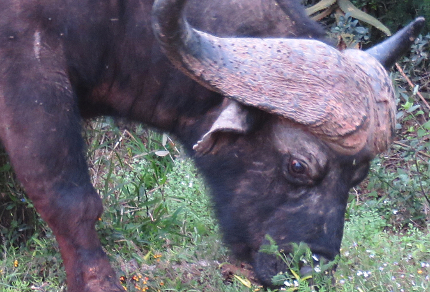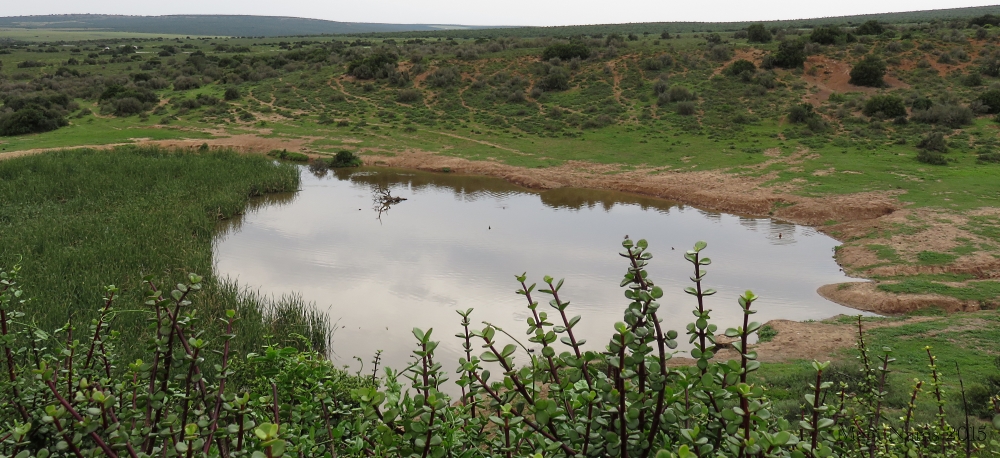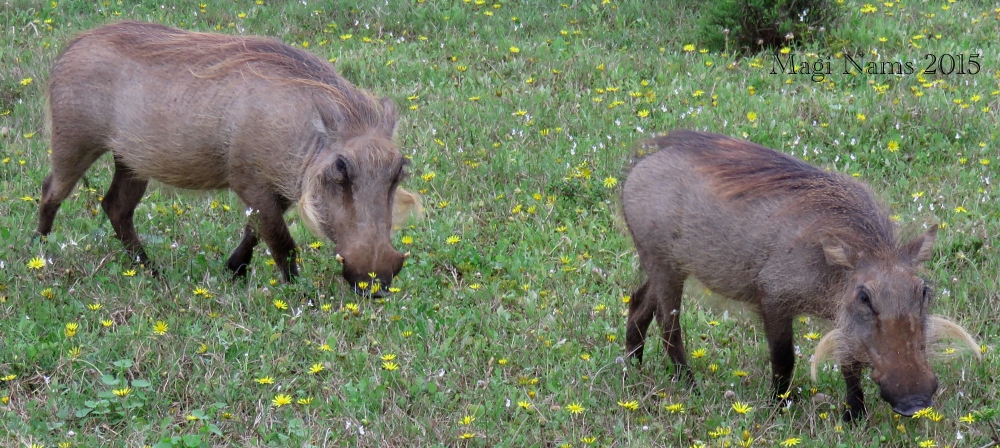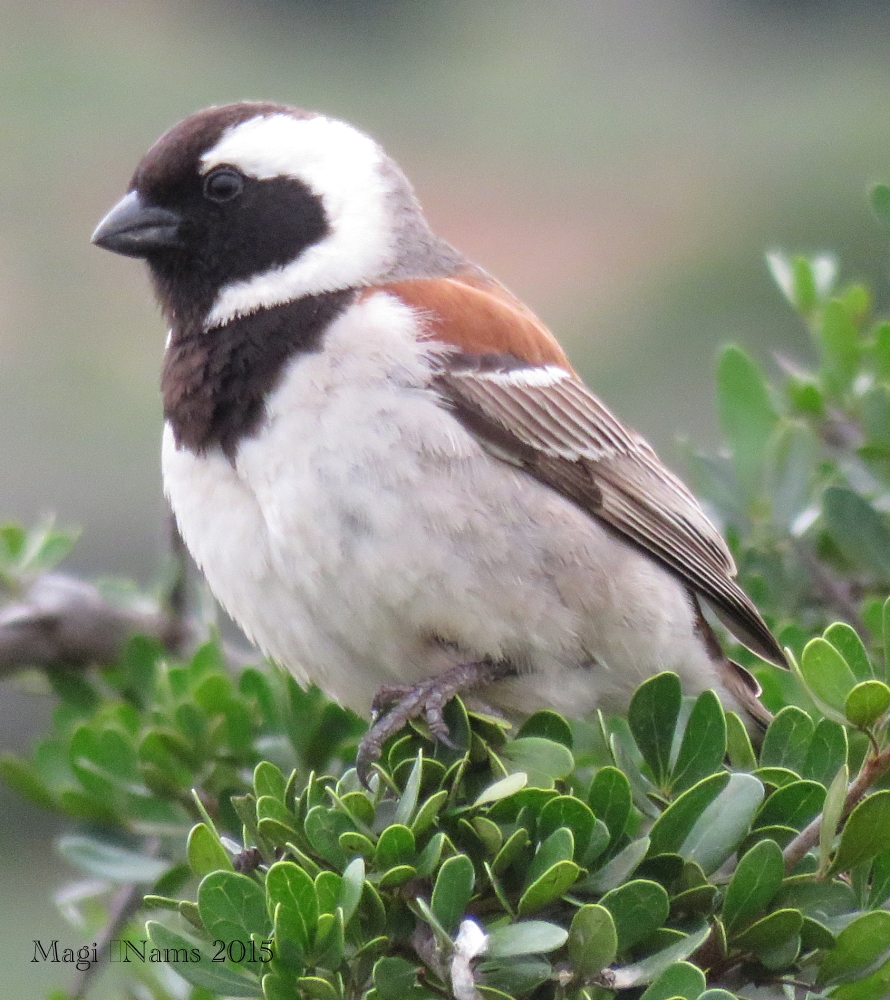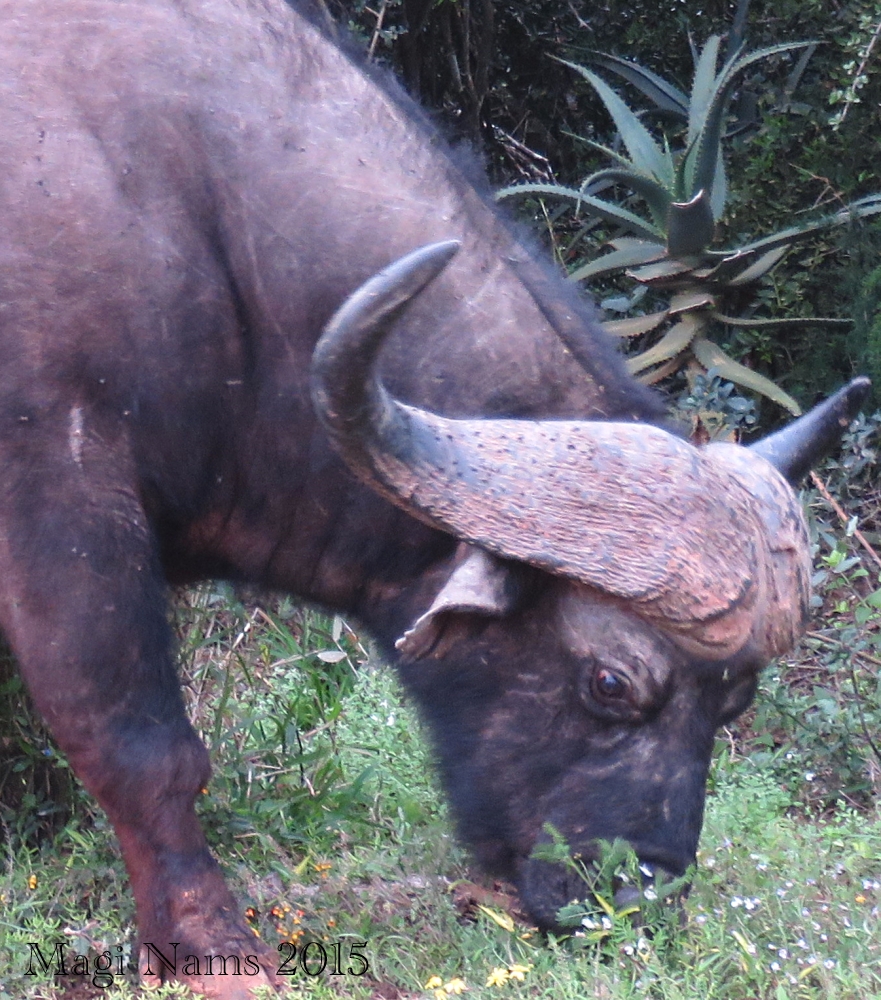A late winter visit to Addo Elephant National Park yielded close-up views of buffaloes, warthogs, yellow mongooses, antelope and newly arrived songbirds.
Mist clung to Eastern Cape valleys and drifted in wisps across hillsides as Vilis and I drove southwest from Grahamstown toward Addo Elephant National Park early on Sunday morning, August 23. Clouded valleys projected an aura of enticing mystery, inviting us to explore. Helmeted guineafowl and red-necked spurfowl winged across the road. Black-shouldered kites and Hadeda ibises on power poles surveyed surrounding pastures. Past Paterson, sheep grazed on one side of the road while ostriches grazed on the other side. Two mongooses raced across the pavement. The South African landscape was alive with life – a perfect antidote for a week spent indoors, writing, and a Saturday of spring cleaning. It was a great day for a late winter visit to Addo Elephant National Park.
Within the park, the vegetation was noticeably greener than when we had last visited Addo, two-and-a-half weeks ago. Young warthogs tussled – head to head – and ate yellow flowers in grassy meadows. Two elephants at the roadside ripped twigs and leaves from thorn trees and devoured them. A vlei rat peeked out from one of several holes that resembled tunnels chewed into a densely twigged shrub. Zebra, eland, kudu, and red hartebeest grazed on a distant hillside. At Domkrag Dam, I spotted a Hadeda ibis on its nest built onto a dead tree in the dam. The very air seemed to shout “Spring!” even though August is still winter in South Africa. (Tap on photos to enlarge.)
We spent the entire day driving park roads between Addo Main Camp and Camp Matyholweni and ran out of time, not roads. There was so much to see! Cape sparrows sang from shrubs and pecked at elephant dung. A flock of speckled mousebirds preened on a dead stump. A Denham’s bustard strode over grassland, the large ground bird’s head bobbing back and forth with each step.
Three African buffalo bulls grazed near the road, in different places – one so close, we could see its battle-scarred, torn ears, which it constantly flicked back and forth to shoo away flies. Three yellow mongooses loped across a grassland, their long bodies and furry tails reminding me of large weasels. A red Hartebeest obligingly allowed me to photograph it up close.
On this late winter visit to Addo Elephant National Park, we didn’t see lions or jackals or caracals, which we’d seen on other outings in Addo. Still, we enjoyed catching glimpses of some of Addo’s smaller and less glamorous residents. We’ve discovered that Addo always delivers and that its many beauties are truly in the eye of the beholder.
My Addo Elephant NP bird sightings: Hadeda ibis, helmeted guineafowl, pied starling, red-throated spurfowl, *black-shouldered kite, greater double-collared sunbird, Cape crow, common ostrich, red-winged starling, European starling, black-headed oriole, sombre greenbul, fiscal flycatcher, streaky-headed seedeater, speckled mousebird, common fiscal, bokmakierie, Egyptian goose, Karoo prinia, southern pale chanting goshawk, sacred ibis, African hoopoe, southern boubou, southern masked weaver, *Cape sparrow, cattle egret, neddicky, Cape turtle-dove, Cape robin-chat, Cape glossy starling, blacksmith lapwing, *Denham’s bustard, pied crow, black-headed heron, Cape weaver, little grebe (dabchick), *white-breasted cormorant, common moorhen, red-knobbed coot, yellow-billed duck, Cape wagtail, jackal buzzard, crowned lapwing, olive thrush, fork-tailed drongo, *grey-headed gull.
My Addo Elephant NP mammal sightings: African elephant, common warthog, zebra, kudu, red hartebeest, eland, African buffalo, *vlei rat, yellow mongoose, vervet monkey.

